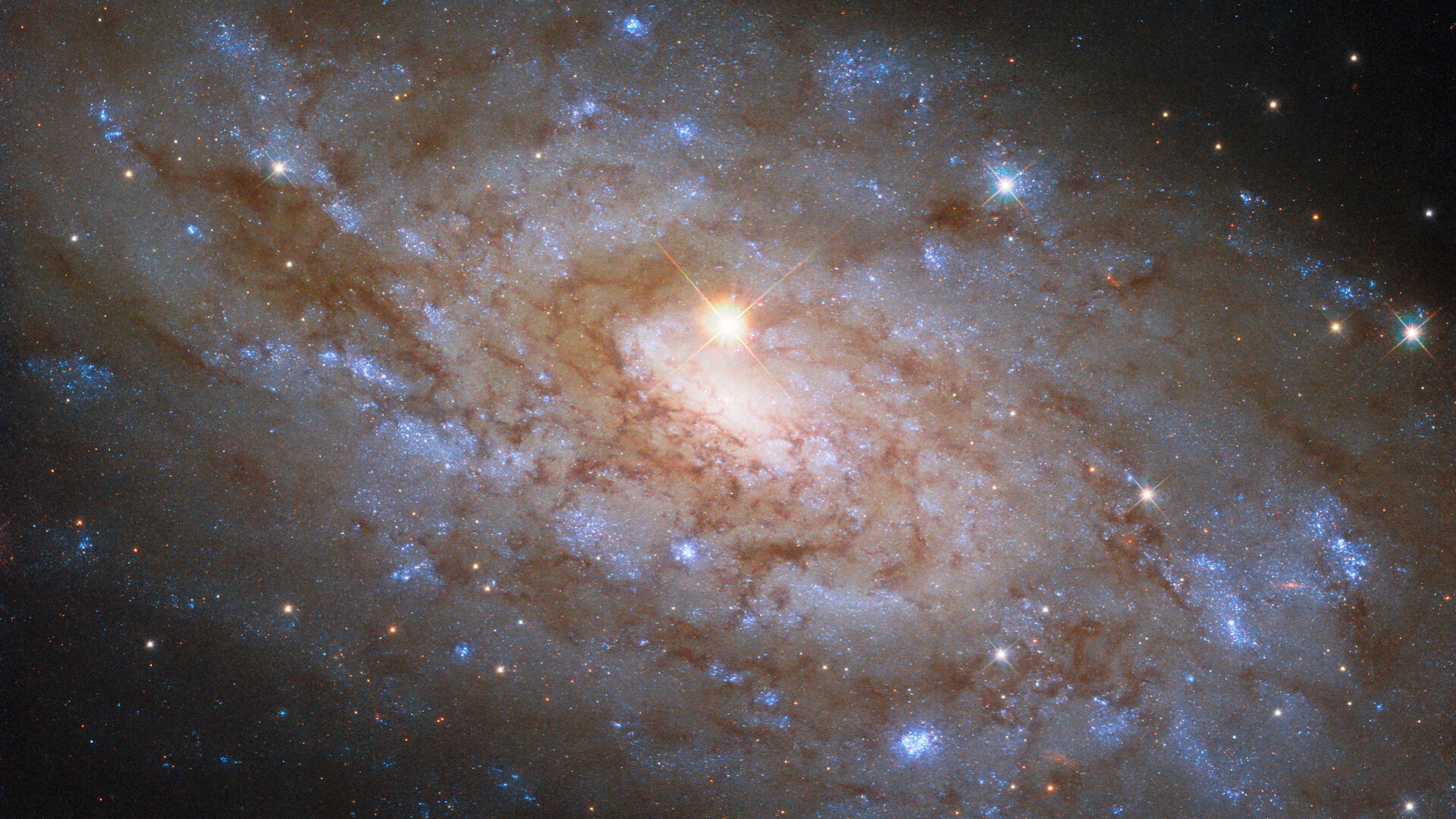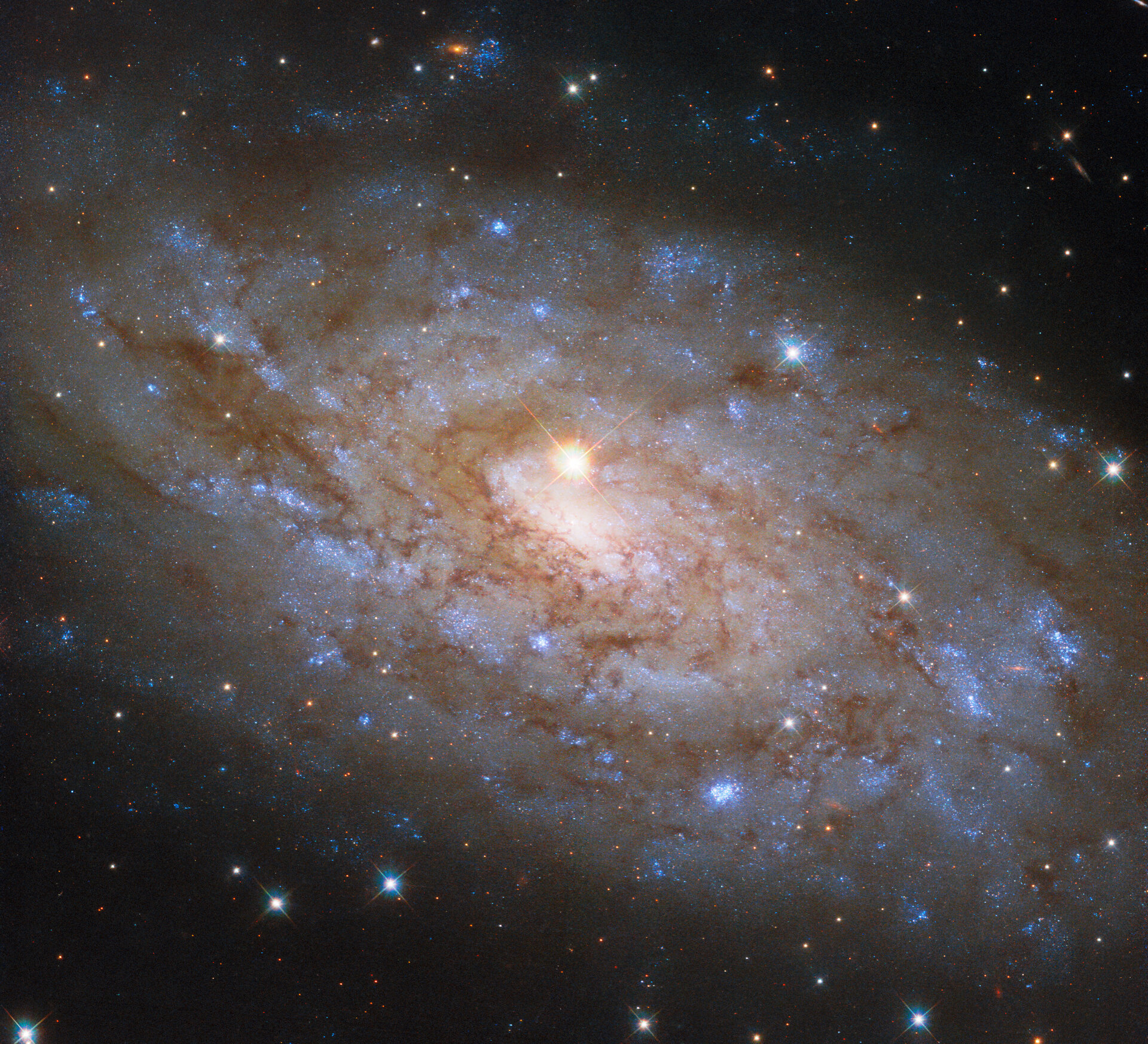
A bright star within our Milky Way galaxy photobombed a beautiful new image of a distant galaxy with "patchy" spiral arms.
The galaxy, NGC 5530, is located 40 million light-years from Earth in the constellation Lupus. The Hubble Space Telescope captured a new image of NGC 5530, which is classified as a flocculent spiral galaxy due to its patchy and indistinct arms, according to a statement from the European Space Agency (ESA).
Near the center of the image is a bright point of light, not to be confused with the galaxy's luminous core. Rather, the bright point is a star located much closer to Earth — within our own galaxy, in fact — only 10 thousand light-years away. It exhibits a cross-like pattern known as diffraction spikes, caused by the star's light bending around Hubble's internal support structure.
"While some galaxies have extraordinarily bright centers where they host a feasting supermassive black hole, the bright source near the centre of NGC 5530 is not an active black hole but instead a star," ESA officials said in the statement.
The bright star in the foreground of the image and the distant galaxy are not physically related or interacting in space. The star appears to overlap with the galaxy because it just so happens to lie along Hubble's line of sight.

"This chance alignment gives the appearance that the star is at the dense heart of NGC 5530," ESA officials said in the statement.
The recent Hubble image captures NGC 5530 tilted at a slight angle. Surrounding the galaxy’s bright core are swirling webs of dark, reddish dust and sparkling blue patches where new stars have formed. Localized bursts of star formation have created the galaxy's fragmented arms that look like clumps rather than the well-defined, continuous arms of a grand design spiral galaxy.







